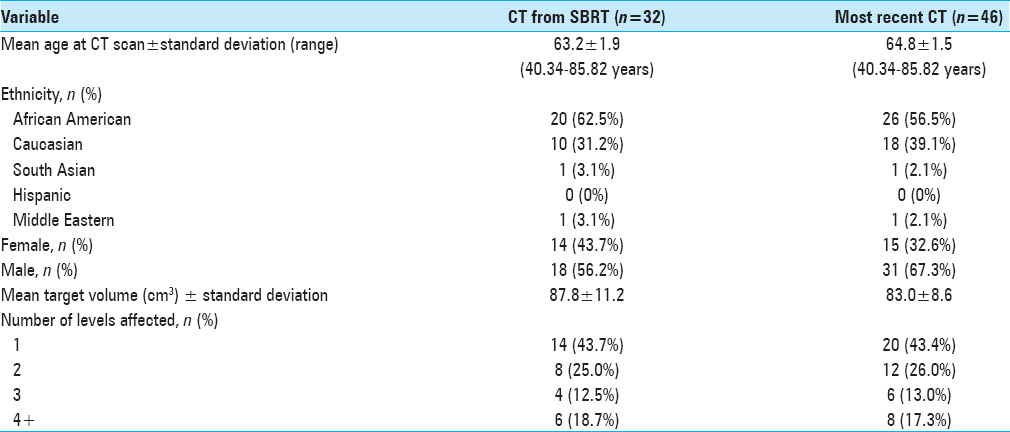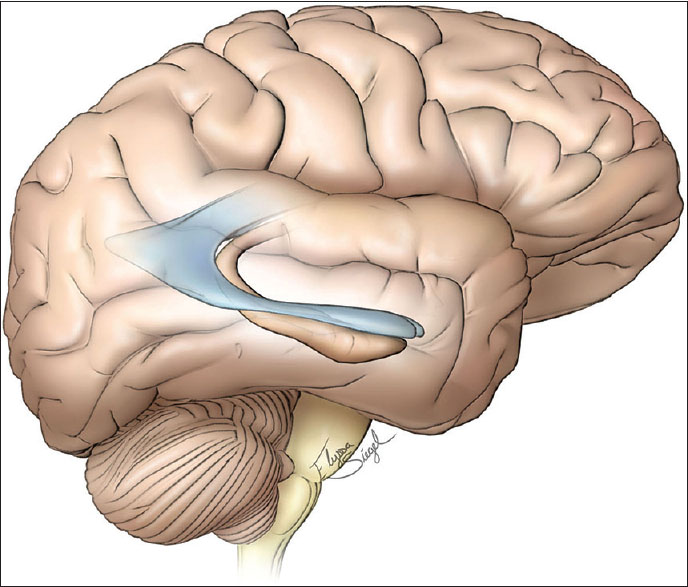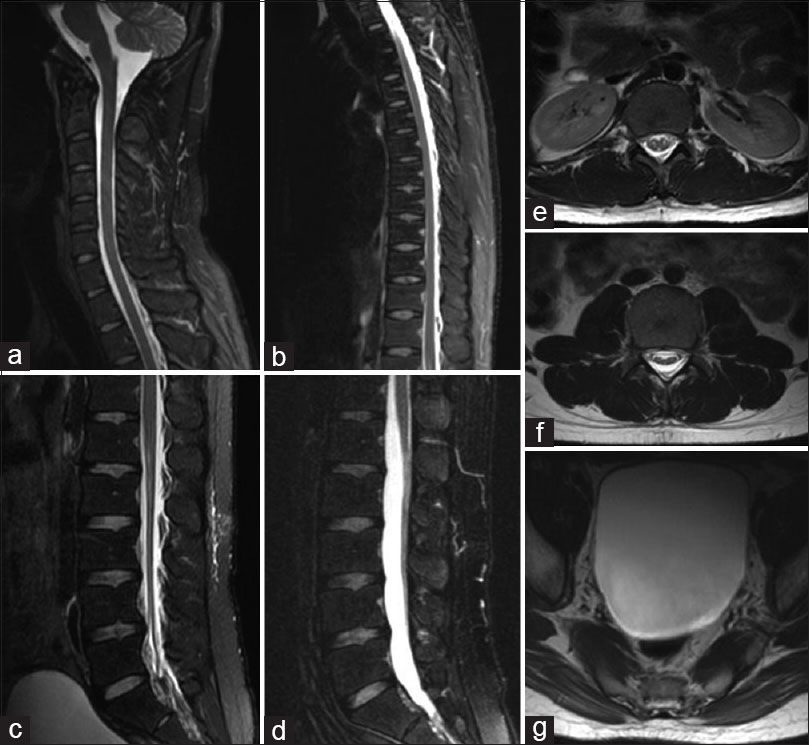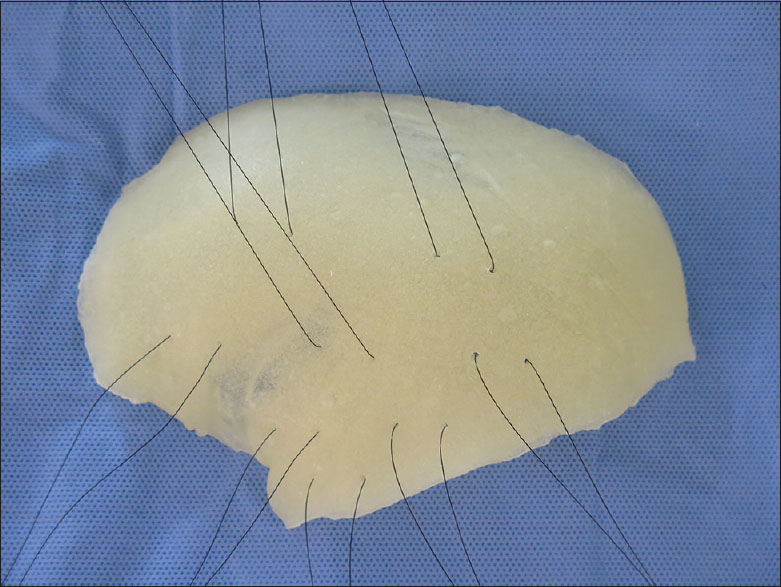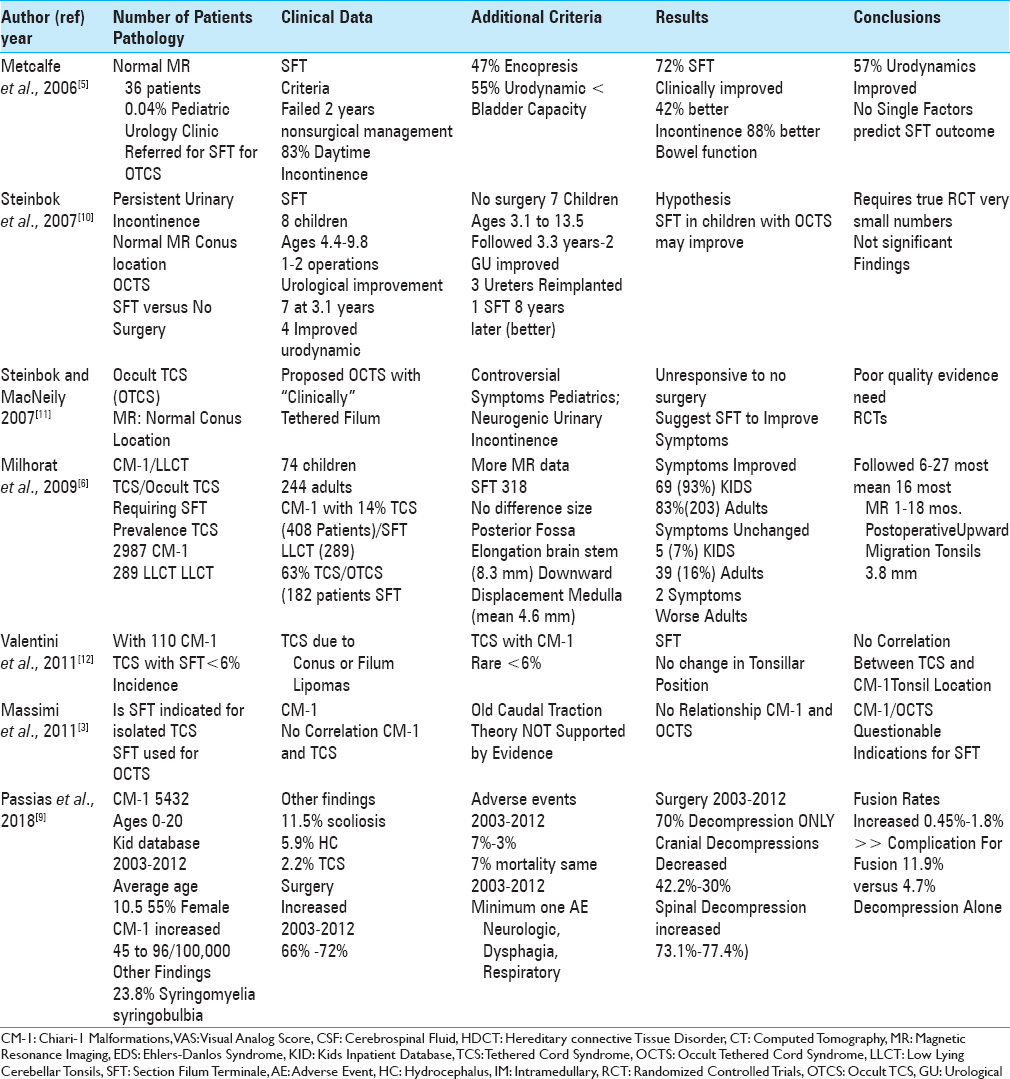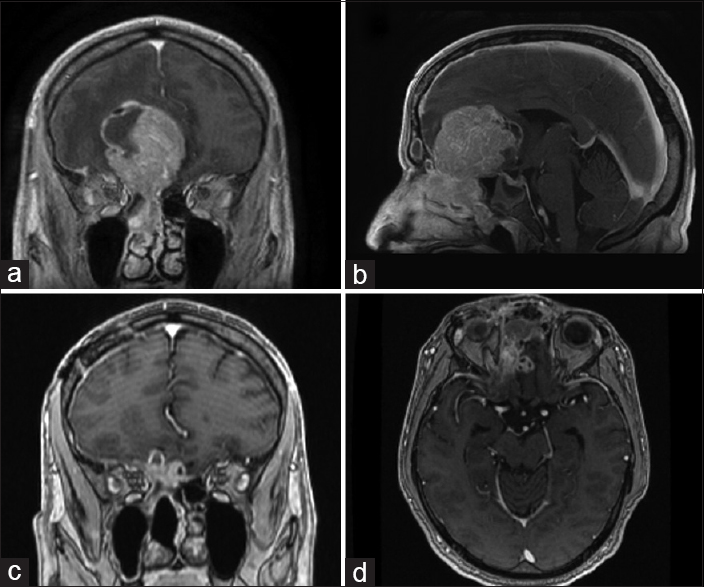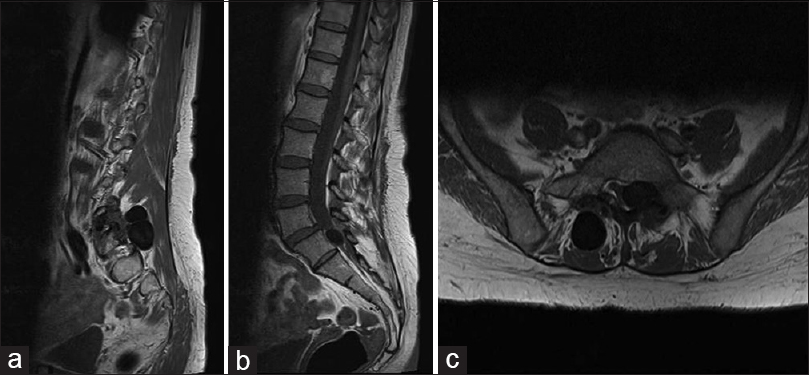Morphometrics predicts overall survival in patients with multiple myeloma spine metastasis: A retrospective cohort study
Date of publication: 22-Aug-2018
Background:Treatment strategies for spinal metastases for myeloma range from conservative measures (radiation and chemotherapy) to invasive (surgical). Identifying better predictors of overall survival (OS) would help in surgical decision making. Analytic morphometrics has been shown to predict survival in oncologic patients, and our study evaluates whether morphometrics is predictive of survival in patients with multiple myeloma (MM) spinal metastases.
External cortical landmarks for localization of the hippocampus: Application for temporal lobectomy and amygdalohippocampectomy
Date of publication: 22-Aug-2018
Background:Accessing the hippocampus for amygdalohippocampectomy and minimally invasive procedures, such as depth electrode placement, require an accurate knowledge regarding the location of the hippocampus.
One burr-hole craniotomy: Suboccipital midline approach to the fourth ventricle in Helsinki neurosurgery
Date of publication: 22-Aug-2018
Background:In this video-abstract, we present one burr-hole craniotomy for the standard suboccipital midline approach developed in Helsinki neurosurgery for the microsurgical management of forth ventricle lesions, distal posterior inferior cerebellar artery aneurysms, and tumoral and vascular lesions of the vermis, cisterna magna region, and posterior brainstem as well.
Epidural cerebrospinal fluid collection following lumbar puncture in an adult patient: A case report and literature review
Date of publication: 22-Aug-2018
Background:Cerebrospinal fluid (CSF) leakage into the epidural space following lumbar puncture (LP) has been documented in pediatric patients, but there have been no reported cases in adults.
Adhesion sutures for seroma reduction in cranial reconstructions with polymethyl methacrylate prosthesis in patients undergoing decompressive craniectomy: A clinical trial
Date of publication: 22-Aug-2018
Background:Cranial reconstruction with polymethyl methacrylate (PMMA) prosthesis is used for calvarial defects secondary to decompressive craniectomies. Seroma is one of the most frequent complications of this procedure and can lead to the dehiscence, extrusion, infection, and loss of the prosthesis. The objective of the study is to analyze the effectiveness of the tacking sutures between the prosthesis and the scalp flap in reducing the seroma.
A review of the disagreements in the prevalence and treatment of the tethered cord syndromes with chiari-1 malformations
Date of publication: 14-Aug-2018
Background:The tethered cord syndrome (TCS) accompanying Chiari-1 (CM-1) malformations and the occult tethered cord syndrome (OTCS) syndrome accompanying the low lying cerebellar tonsil (LLCT) syndrome may be treated with sectioning of the filum terminale (SFT).
A rare case of intracranial teratocarcinosarcoma: Case report and review of literature
Date of publication: 14-Aug-2018
Background:Teratocarcinosarcoma (TCS) is a rare malignant neoplasm with epithelial and mesenchymal components such as fibroblasts, cartilage, bone and smooth muscle. With less than 100 total reported cases, this malignant neoplasm is rarely encountered by neurosurgeons because it primarily involves the nasal cavity and paranasal sinuses.
Intraspinal calcinosis mimicking intervertebral disc extrusion: A clinical and surgical case report
Date of publication: 14-Aug-2018
Background:Subcutaneous calcinosis is a well-recognized manifestation of systemic sclerosis that usually involves multiple pressure points and may also be found in the paraspinal or intraspinal regions. In this case, intraspinal calcinosis uniquely led to a severe neurological deficit.
One burr-hole craniotomy: Enough lateral approach to foramen magnum in helsinki neurosurgery
Date of publication: 14-Aug-2018
Background:In this video-abstract, we present a one burr-hole craniotomy for the enough lateral approach (ELA) to the foramen magnum developed in Helsinki Neurosurgery, a less invasive variant of the classical far lateral approach. ELA does not require the resection of the occipital condyle nor the exposure of the extracranial/intraosseal course of the lower cranial nerves. The vertebral artery is not transposed and the sigmoid sinus is not skeletonized. ELA allow us to access lesions that are close to the level of the foramen magnum (less than 10 mm). In this regard, low-lying vertebral aneurysms, foramen magnum meningiomas, or low brainstem cavernomas and intrinsic tumors are our common indications for this approach.
One burr-hole craniotomy: Subtemporal approach in helsinki neurosurgery
Date of publication: 14-Aug-2018
Background:In this video-abstract, we present the Helsinki Neurosurgery one burr-hole craniotomy standard subtemporal approach to the floor of the middle fossa and the interpeduncular space. This procedure facilitates access to the multiple structures; the basilar artery bifurcation, the superior cerebellar artery, or the P1-P2 segments of the posterior cerebral artery, and lesions located around the posterior clinoid process/less than 10 mm above it. Even though the specific location and size of the lesion may vary, this approach accesses all mentioned structures with very minimal variation.


